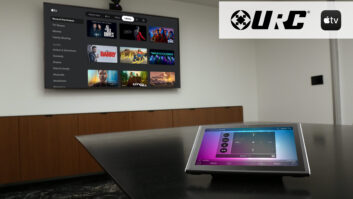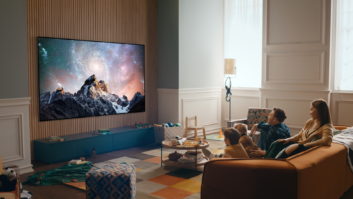When youre in the game, connections are everything. As you might expect when the subject is raised here, the game in question is broadly categorized as a console video game system, which is fancy marketing talk for a PlayStation, Xbox, or Nintendo.
At the start of the video game revolution, connections were purely physical, as the person you were playing against had to be right next to you and using a controller hooked up to the same console. The dimensions of gaming began to change when PC-based games evolved into massive multiplayer games, also known as MMORPG (Massive Multiplayer Online Role-Playing Games). They popularized the concept of using broadband connectivity to permit one player to go up against one, or many others, regardless of where the individual gamers were located. MMORPG is a great idea for the die-hard gamer, but for the average consumer it requires technical knowledge and a level of hardware that is just too complex. Recognizing the appeal of online gaming, the current Xbox and Playstation2 platforms have each incorporated connected gaming, Xbox via a built-in adaptor and a subscription payment option, while PS2 uses an external adaptor and a different transactional model.
The results have been nothing less than spectacular. Indeed, many pundits in the game world have suggested that the Xbox Live has been as important to the traction that Microsofts game system has gotten in the market as almost anything else. Sony has also gotten into the fray with a successful online franchise with titles such as its SOCOM series, and connectivity has been a key part of the plan for the PSP (PlayStation Portable) system. Learning from experience, Microsoft is making the online capabilities of its just-released Xbox 360 system a major selling point. Sony, along with Nintendo, has promised that connectivity will be a major focus for its new game platforms as they reach the market in 2006.
All of this is in line with the major efforts the game industry as a whole is making to raise the demographic profile of console gamers from the stereotypical teenage boy playing games on his own to boomers using the consoles in a more elaborate viewing and listening environment. Why not take advantage of the high profile that these games and the software, services, and accessories that surround them will have in the general media and business press to raise the profile of your own installations and the appeal they have to your clients?
To get the total picture on the range of connections required and possible with video game consoles, one needs to take a step back to the basics of audio and video before moving to the more exotic area of online. On the video side, any installer who encounters one of the current generation consoles and who does not provide a Y/Pr/Pb component connection is missing the boat and denying the client optimal video quality. With digital displays featuring component inputs and HD capability now quickly becoming the norm, it should be mandatory. Even with the current platforms, a number of the key games even render in HD; when the new Third-Gen consoles hit, everything will be HD.
The same goes for sound. All of the consoles offer a means to provide digital audio, and as with component video, it is downright foolish not to use them. For smaller kids room systems this will often become the way in which DVD playback with multichannel sound is facilitated. In larger rooms it is still important to deliver the 5.1 immersive sound possible with todays games.
To the informed installer this almost seems to be something that shouldnt even require explanation, but youd be surprised at the number of dealer/installers unaware of the component video and digital audio game options. Providing the best quality the games output is just too obvious. It is simple to configure, easy to install and best of all, easy to demonstrate as something that improves the performance of the products while highlighting the audio and video quality you are providing with other components.
Next up is the online connection for PS2 and Xbox. If there is a wired network connection co-located with where the game console has landed, hook-up is simple: plug it in. In other cases, however, a wired network connection might not be available, and that is where the use of either a wireless or wired bridge product fits in. Many are available from the leading network products and accessory suppliers, and the choice of brand and topology is best left to the requirements of each job, as no one size fits all. There is value-add for you here, because even though the physical connection of a wireless or power-line bridge is simple, the network configuration is a place for you to provide service. Particularly in a wireless system with all the proper security options have been activated, such as WPA, turning off the SSID beacon and possibly even MAC address control, adding the bridge is not a DIY job for the average client.
Dont let the tail wag the dog and have the requirement for broadband at a game console open a leak in an otherwise secure system. Simply familiarize yourself before hand, and the negotiations between the game, the bridge and the network infrastructure will be simple for you, and something the client will be happy to have someone else do.
Next on the agenda is a video camera, which is something that you might not associate with console games. While the current Xbox has provisions for this, the class act of integrating a video camera and a game console is Sonys EyeToy. Although EyeToy is modestly priced and the connection is a simple one, take advantage of its potential. Create a specially lit area that the EyeToy points to, provide a playback monitor so that the person on camera can face the audience and still see the game action, and in general create a stage-like setting. The value of this in an adult crowd becomes very clear when playing something such as WishyWashy, or the Table Tennis component of our EyeToy: Play2 favorite, as after dinner entertainment on the big theater screen.
For more serious applications, EyeToy: Kinetic merges an exercise program with the video game and camera, disproving the complaints that gaming is a sedentary activity. Here, a PS2 and an EyeToy provide an installation opportunity, with a large flat-panel screen, of course, in the homes exercise room. A final EyeToy feature of note is the Cameo functionality that allows gamers to create 3D image models of their head that can then be used in some of the EyeToy games and other PS2 games such as World Tour Soccer: 2006.
Another aspect of game connectivity comes from the ability of Sonys PSP handheld game to not only communicate with other PSP units in the same room via ad hoc wireless, but also to communicate with PSP gamers elsewhere via an 802.11 infrastructure system. The kids can probably configure the ad hoc connectivity, but if this is an application that you see happening more than occasionally in a clients home, you would be wise to make certain that the wireless connectivity of the PSP does not interfere with any other WiFi systems in the home. If parental control is required, such that infrastructure gaming is not approved, you may want to separate the channel settings for the PSP and the normal home system. If nothing else, this certainly is a hint that you should add a line in any prospective client questionnaires to inquire about the presence of PSP games and how they are used.
The latest connection point for games also involves PSP, along with Playstation2. The new SOMOM: Fireteam Bravo game for PSP not only allows the play described above between PSP units, when a USB cable is used to connect the PSP to a PS2, there is interoperability with SOCOM 3: U.S. Navy Seals on the PS2.
With this game industry first, the Areas of Operation in the two-game versions are the same, but there are different mission objectives. After play on one platform or the other, the games may synced via the cable connection and have the play in one game affect the other games mission structure. Though not necessary for the game to work on either platform, the interactivity gives the players who complete the crosstalk missions an extra advantage and the end result is a more complete play out of the games storyline. If all of this werent enough, PSP players in the infrastructure mode can communicate with each other through optional headsetsa reminder to add the headsets available for both Xbox and PS2 whenever online play is part of a system.
In many cases the choice of system will be moot, because it wont be that uncommon to encounter an installation where there is more than one console and more than one of the systems in the home. Query for all game use before planning the video, audio, and data networking.
The November 22 introduction of Xbox 360 marked the movement of the new games from future to present. Here, connections will become more important than ever. First, as noted, high-definition video and multichannel audio will be a key part of the games and systems for Xbox 360 and PlayStation3, and presumably as well for Nintendo Revolution, though that system is much further off in the distance. Even if you could get by without component video and digital audio before, you wont want to try that here. The same thing goes for an online connection.
Anticipating these games, note that, at least in the first hardware incarnations, Xbox 360 will offer analog component video outputs only, while PS3 will concentrate on HDMI with the availability of a component output for HD still an open question. Microsoft will likely attempt to compete with EyeToy, although they have said that any off-the-shelf USB-connected web cam will do. The camera will be part of chat and messaging well beyond what is available today. Of course, PS3 has plans to extend EyeToy to the new platform, with an HD EyeToy not outside the realm of possibility. Either way, be sure to pre-wire the needed USB run from the camera location to the game console.
One cable you will not have to run with the new consoles is the connection from the controllers to the console. Both PS3 and the step-up ($399) version of Xbox will feature wireless controllers. This is a must-have for any game consoles installed in dedicated theaters, and it is worth a reminder that for todays consoles there are a number of third-party wireless adaptors available to free the controllers from their tethers. As with any wireless product, particularly when it is added to an already RF-rich environment, be ready to look for any possible interference that might interfere with the products operation, or that of something else in the home, as well as any potential to compromise network security. Of course, you should always be clear on any needed configuration or pairing settings that need to be established with controllers or any other wireless devices.
With Xbox 360, another possible area for the systems integrator to provide a value-added service is with the integration of the Media Center Extender capabilities of the game console. When properly networked to a computer, there will be extensive access to the audio and video content stored elsewhere. While the ads will say it is easy to install, the complexity can easily give consumers a headache. Again, thats where you come to the rescue.
The introduction of PS3 is still off in the distance, so the complete picture for its integration is still a guess. What is already known, however, is that with two HDMI connections there will be the opportunity to create some amazing system applications. The ultimate for high-end gamers will be to feed each of the HDMI outputs to a separate display so that with two side-by-side 16:9 screens you will have the ability to output a 32:9 image that may rival a dome theater for its immersiveness. Alternatively, some gamers may prefer to view the main game on the big screen, with the secondary output sent to a smaller, second monitor or routed into a PIP input in the main screen for stats or video chat. Either way, the cockpit like setting gives you wide creative latitude in designing the room environment at the same time as increases game excitement for the client.
Another key feature of PS3 will be the ability to play BluRay discs, so make certain that you treat all audio and video connections as you would for any high-quality optical disc player. Xbox 360 will not have a blue laser HD system, but it, too, will offer some high-definition playback from streaming sources or Windows Media encoded HD discs, so the same rules will apply even though the lack of HDMI will make the physical connections different.
No matter which generation of platform, plan for them, and you will quickly make the most important connection of all: the one to bigger upgrades from existing clients and word of mouth that brings more jobs from new clients.
Michael Heiss ([email protected]) is a technology and marketing consultant based in Los Angeles.







